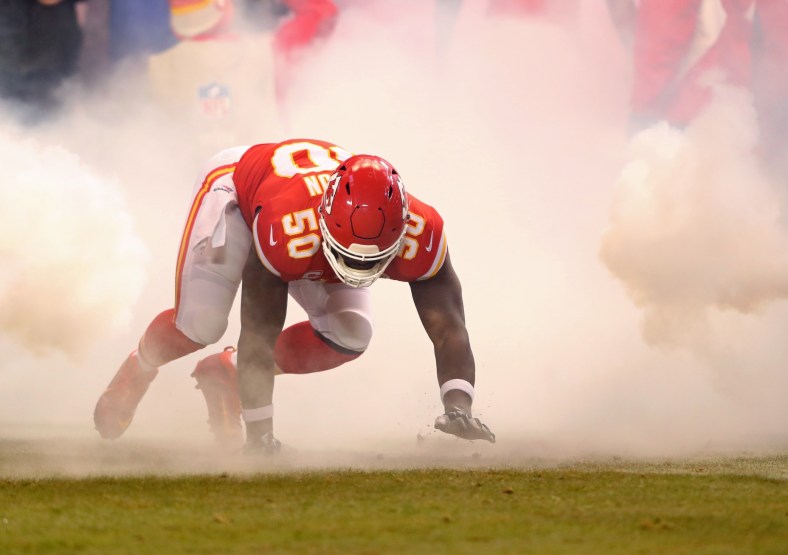
The Indianapolis Colts entered Thursday with a whopping $74.91 million to spend under the NFL’s salary cap. Fans in Indy were openly wondering why the team did not exhaust a ton of this cash capital on top-end free agents.
Instead, young general manager Chris Ballard and Co. played it slow. They didn’t panic with massive overpays to fill out an already budding roster.
That changed to an extent on Thursday with Indianapolis signing four-time Pro Bowl pass rusher Justin Houston to a two-year, $24 million deal. Released by Kansas City earlier in the offseason, the 30-year-old Houston has a ton left in the tank.
This is a move that should be heralded by objective NFL minds the world over. Here’s why it’s just part of Indy’s broader master plan.
Indianapolis kept draft assets: With two second-round picks, the Colts could’ve made a move on the trade market.
- According to ESPN’s Adam Schefter, Indianapolis previously inquired with Kansas City about Pro Bowl pass rusher Dee Ford.
- Rather than give up one of those second-round picks, the Colts signed Ford’s former teammate.
- Ballard and Co. certainly had the cash to spend on Houston without having to stunt the Colts’ growth process.
- In the end, Kansas City took a 2020 second-round pick from a rebuilding 49ers squad for Ford. It makes sense for all three sides.
Houston fills a major need: They needed that edge presence.
- Three of the Colts’ top-four sack getters from last season play almost exclusively with their hands in the dirt.
- The only member of this group to roam the field is linebacker Darius Leonard. He’s not a true pass-rush guy. That was proven during a dominant rookie campaign.
- Houston can play with both his hands in the dirt and as linebacker in a stand-up position. This gives Indy a ton of flexibility in the front seven.
Move doesn’t impact the draft: Colts will likely still go edge early in April.
- Unlike trading for Ford, Indy didn’t have to exhaust draft capital in acquiring Houston. That does two things.
- First off, Ballard will likely still go pass rush with one of the team’s first-three picks.
- Indianapolis also now has the ability to trade up in the first round to add a player at a position of need.
- This could be wide receiver, running back (unlikely), defensive tackle, strong-side linebacker or cornerback. So many options available to the team.
It’s just part of the master plan: Don’t think for a second that Ballard doesn’t know what he’s doing.
- Ballard previously stuck it out to see what the market might offer top Colts cover guy Pierre Desir. In the end, he brought back the veteran on a reasonable deal.
- Signing Devin Funchess to a one-year, $10 million deal seemed to be a massive overpay. That’s until we realize what some slot receivers earned on the open market. He now provides Andrew Luck that elusive big-bodied red-zone target.
- Much like Desir, Ballard let starting strong safety Clayton Geathers test the market. The veteran didn’t like what he saw — eventually re-signing in Indy.
It’s this patient approach to free agency that’s going to help Ballard continue to build a monster in Indianapolis. He’s not going to overpay for his own free agents or to bring in exterior options.
Ballard’s mentality is much like what we’ve seen from Bill Belichick and the New England Patriots. Don’t react to a market. Set your own market. Be patient and come out on top.
Signing Houston is yet another example of this.